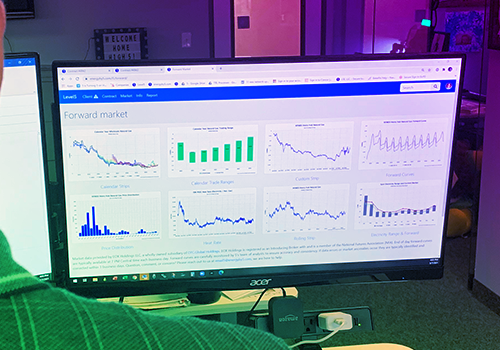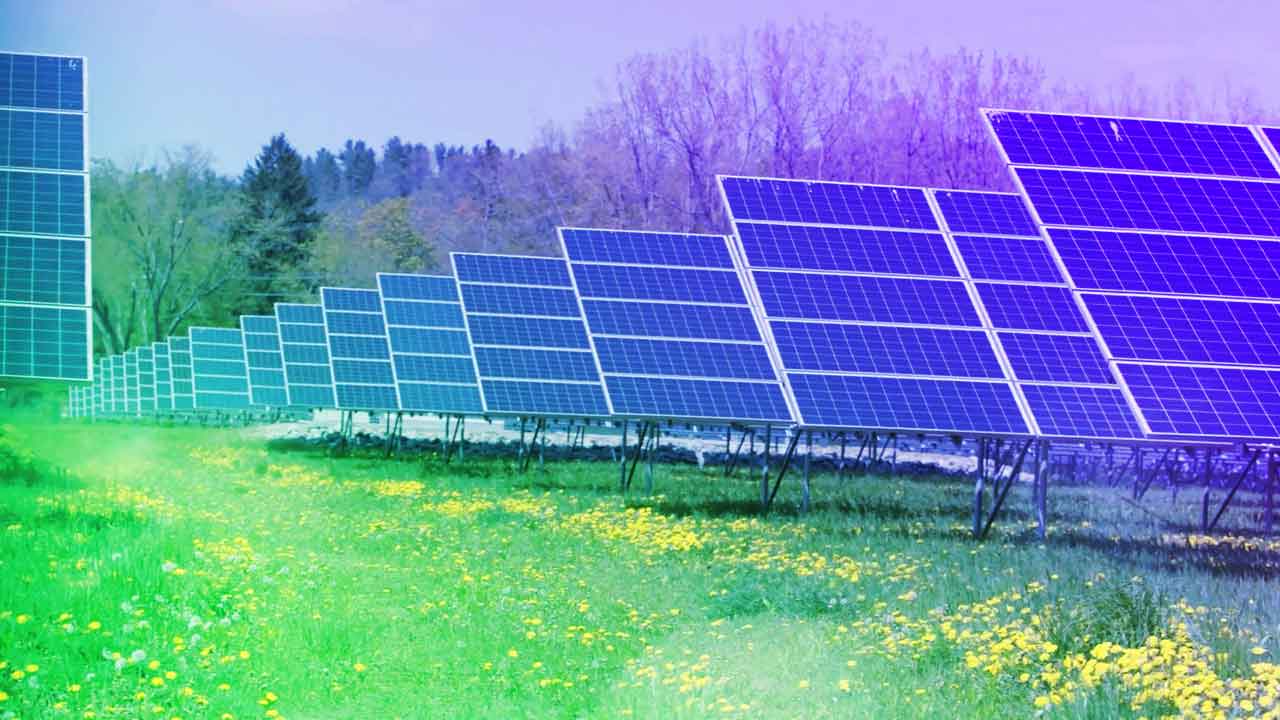W. Edwards Deming, the father of Total Quality Management, famously stated,"Without data, you're just another person with an opinion." Deming was instrumental in using data and statistical process controls to make better business decisions. When it comes to energy markets, there is a data deficiency and a lack of price transparency for most clients. Without adequate energy market data, many energy-related decisions are made on speculation, inadequate or inaccurate information that can lead to actions taken on biases and false assumptions.Level5 is a proprietary platform built entirely in-house by 5’s industry-leading development team. For clients, it serves as a data repository, usage analysis tool, and supercharged market analysis engine. Since 5 is a data-driven company, Level5 forms the foundation of our energy advice and is at the core of our customized energy strategies. 5 firmly believes that better energy decisions are formed from better energy data.
6 min read
Level5: A Game Changing Energy Management platform
By 5 on June 26, 2024
Topics: Sustainability Education Renewables
11 min read
May 2024 - Energy Market Letter
By Jon Moore on May 14, 2024
On behalf of the team at 5, I am pleased to forward our May 2024 market letter. In this edition, we discuss several interrelated topics. First, we look at ongoing legal challenges to two new federal energy regulations, (i) the SEC’s climate change reporting rules, and (ii) the EPA’s new power plant emission standards. Second, we address a question we are hearing often from our clients, especially those faced with rising energy prices: “Could President Trump’s election reduce the price of electricity?”
Topics: Markets Natural Gas NYISO ERCOT Sustainability Newsletters Education Renewables
2 min read
5 Facilitates Bradley University Agreement With Nexamp for Community Solar Offtake in Illinois
By 5 on March 5, 2024
PEORIA, Ill., March 5, 2024
5, a leading energy and sustainability advisory firm, orchestrated a community solar deal between Bradley University and Nexamp that will help to add renewable energy to Illinois’ power grid. Bradley University will be the anchor subscriber on four community solar projects developed by Nexamp in Illinois in the next two years. The projects stand to produce over $115,000 in annual cost savings for Bradley University, and over 26,000 MWh of renewable electricity to advance Illinois’ renewable energy goals.
Topics: Clients Sustainability Press Renewables Community Solar
2 min read
5 Acquires BidURenergy and NRG Advisory Services to Expand Its Presence in the Northeast
By 5 on January 29, 2024
DALLAS (May 5, 2023)
5, one of North America’s top energy advisoryand management firms, announced its acquisition of BidURenergy(“BUE”) and NRG Advisory Services from NRG Energy, Inc. Based in Buffalo, NY,BUE and NRG Advisory Services provide a full suite of exceptional brokerage and energy advisory services to clients throughout the Northeast.
Topics: Clients Procurement Sustainability Press Renewables
14 min read
September 2023 - Energy Market Letter
By Jon Moore on September 18, 2023
On behalf of the team at 5, I am pleased to forward our September market letter. If you had any doubts that the energy transition is happening, recent events in Texas and New York confirm that the answer is yes. As discussed below, these states have very different approaches to energy regulation, and both have struggled to incorporate intermittent resources in the energy mix. For clients in Texas, New York, or any other deregulated market, planning for the challenges of the energy transition, including increased regulatory risk, should be a key component of your energy management strategy.
Topics: Markets Natural Gas NYISO ERCOT Sustainability Newsletters Education Renewables
3 min read
Why Install Electric Vehicle Chargers?
By 5 on July 11, 2023
Why Install Electric Vehicle Chargers?
Topics: Markets Sustainability Renewables Resiliency
2 min read
The EPA’s New Climate Rule – Déjà vu All Over Again
By 5 on May 18, 2023
On May 11, 2023, the U.S. Environmental Protection Agency (EPA) proposed new rules designed to limit emissions from existing and new coal and natural gas fired power plants. This is the EPA’s third swing at regulating CO2 emissions from power plants. Its first at-bat dates back to 2015 when the Obama Administration’s EPA introduced the Clean Power Plan (CPP). The CPP proposed state-by-state emissions limits. These limits were quickly challenged by numerous states, particularly those with significant amounts of coal-fired generation. While these legal challenges were ongoing, President Trump was elected. Trump scrapped the CPP and introduced the Affordable Clean Energy Rule (ACE), which overrode the CPP and gave the states more power to set their own emission limits. The ACE also faced challenges in the courts.
In June 2022, the Supreme Court issued a ruling in West Virginia v. EPA that significantly limited the ability of the EPA to regulate emissions without a clear mandate from Congress. This ruling assures that the EPA’s new proposed rules, if finalized, are likely to face a lengthy legal battle.
The latest EPA plan sets out aggressive emission reductions and is likely to further accelerate the retirement of fossil fuel generation units. By 2030, the EPA plan requires any coal plant that intends to operate past 2040 to use a carbon capture and storage (CCS) system to eliminate 90% of its CO2 emissions. Large natural gas generation units will also be required to install a CCS that captures 90% of their carbon emissions by 2035 or operate on clean hydrogen by 2038. While there are different restrictions for smaller generation units, the EPA’s rules lean heavily on carbon capture, clean hydrogen and in some instances, use of dual-fueled gas plants with both natural gas and green hydrogen. At the same time, the EPA has acknowledged that CCS and clean hydrogen are not yet in widespread commercial use.
As filed last week, the EPA plan is a proposed rule, and the EPA will need another year or so to issue a final version. Once the final version is issued, states will have another two years to submit plans to comply with the regulations. This timetable will be delayed further by the inevitable legal challenges. West Virginia Senator Shelley Moore Capito and Attorney General Patrick Morrisey have already vowed to lead congressional and legal efforts to kill the rule.
A few things are clear. First, if the rules are adopted, the cost of generating electricity from coal and natural gas plants will increase dramatically. Second, even if the prospects for the EPA’s new rule are limited by various challenges, the proposed rules will cast a shadow over new investments in existing and new fossil fuel generation. Testifying before FERC on May 4, 2023, a bipartisan panel of FERC commissioners (2 Democrats and 2 Republicans) raised their shared concern that the reliability of our electricity grid is challenged by the fact that we continue to see fossil plants retire at a rate far faster than they are replaced by new emission-free generation. Of course, we will continue to monitor this important regulation on behalf of our clients.
Topics: Markets Natural Gas Sustainability Renewables Resiliency
12 min read
February 2023 - Energy Market Letter
By Jon Moore on February 22, 2023
On behalf of the team at 5, I am pleased to forward our February market letter. This letter discusses: (i) the recent fall in natural gas prices and increasing natural gas price volatility, (ii) the 188th Congress and the potential impact of the election on Federal and State energy policy in 2023, and (iii) how the electricity grid held up during Winter Storm Elliott and the February cold snap.
Topics: Markets Natural Gas NYISO ERCOT Sustainability Newsletters Education Renewables
4 min read
Community Solar in New York State
By 5 on November 28, 2022
Community solar is a financial structure implemented by states and utilities that allows the financial benefits of solar electricity production to be shared with members of the community. Here is how it works: A solar developer builds a solar project and sells all the power and renewable energy credits (RECs) generated to the utility in exchange for “solar credits”. Those solar credits are applied as a dollar value credit to utility bills, reducing the amount owed for electricity provided by the utility. The developers then sell their solar credits to members of the community at a discount. Community members sign contracts with developers to purchase solar credits at a set discount rate, a percentage savings on the dollar value of the solar credit. In New York State, the market-rate discount is 10%. That means that by signing a contract with a developer, an electricity customer in New York can pay $90 to a developer for solar credits that will reduce the customer’s utility bill by $100. In some cases, that $90 is paid to the solar developer (or a third-party billing company hired by the developer), and the $100 solar credit is applied to the customer’s utility bill. New York has consolidated billing, which means there are not always two separate utility bills. The $10 savings is subtracted directly from the utility bill and the customer pays only $90 to the utility. In the end, the developer receives 90% of the per kWh value of solar and the remaining 10% of the value is spread among the community solar subscribers.
Topics: Markets NYISO Renewables
10 min read
November 2022 - Energy Market Letter
By Jon Moore on November 2, 2022
On behalf of the team at 5, I am pleased to forward our November market letter. This letter discusses: (i) the upcoming Mid-Term Elections, and how the results could impact energy policy; and (ii) the challenges facing grid system operators in Texas, New England and New York as they work to integrate large volumes of intermittent resources into the grid mix.
The Mid-Term Elections
Recent polls favor Republicans to take control of the House and perhaps the Senate as well. As a result, several clients have asked what such a change in Washington could mean for energy policy. The question is particularly interesting because the landmark Inflation Reduction Act (IRA), which allocated some $369 billion to the energy sector, was passed by the Senate and the House without a single Republican vote.
The Inflation Reduction Act: The short answer is that the election results will probably have little effect on energy policy. While a change in control of the House or the shift of a single Senate seat would have doomed passage of this legislation, since it was passed and signed into law by President Biden, it will be difficult to repeal it. Even if the House and Senate pass legislation to repeal or amend portions of the IRA, President Biden has veto power, and overriding a veto requires a vote of two-thirds of the members in the House and Senate. This is good news for developers of renewable power, energy storage, electrical vehicle manufacturers and others that will benefit from the incentives found in the IRA. But this does not mean that the IRA and its various energy incentives are immune from challenges in the courts.
There are some interesting parallels between the IRA and the Affordable Care Act (ACA). Like the IRA, the Democrats used budget reconciliation to get the ACA approved by the Senate, and all Republicans in the House and Senate opposed the ACA. President Obama signed the ACA in March 2010, and in the November 2010 mid-term elections, the Democrats lost control of the House, in part, because of opposition to the ACA. The new congress did not reverse or upend the ACA, in part because politicians have little appetite for taking benefits away from voters. Yet the law became the subject of extensive legal challenges, one of which ended up in the Supreme Court.
While there is considerable opposition to the IRA, and it will undoubtedly face legal challenges, even though the law does not appear to be subject to the same serious constitutional challenges (for example, the constitutionality of the insurance mandate) that faced the ACA. In addition, as in the case of the ACA, we expect that in the two years remaining in the Biden Administration, a significant amount of the benefits will be granted to various energy projects. Once grants are made, it will be difficult if not impossible to reverse them.
Congressional Oversight: While the IRA may be safe from legal challenges, we expect that a Republican controlled house will use its oversight powers to review almost all aspects of the IRA and other programs that address climate change. This could certainly cause some delays in the implementation of the IRA’s programs and slow or halt other efforts to address climate change such as the SEC’s plan to require ESG reporting. For example, comments from Rep. Garland “Andy” Barr of Kentucky, a member of the House Financial Services Committee, indicated that ESG principles, “will be one of the major focuses of oversight of a Republican majority” adding that “My view is that ESG investing is a cancer within our capital markets,” Barr said. “It is a fraud on American investors.”
On the state level, we have already seen several states, pushing back against BlackRock and other investment firms that prioritize ESG principles. Texas has passed legislation that restricts the state’s retirement and investment funds from doing business with firms that “boycott” the oil and gas sector. Echoing this approach, Louisiana Treasurer John Schroder recently pulled $794 billion in pension fund money from BlackRock funds due to their use of ESG criteria in making investment decisions. “Your blatantly anti-fossil fuel policies would destroy Louisiana’s economy,” Schroder said. “In my opinion, your support of ESG investing is inconsistent with the best economic interests and values of Louisiana,” Schroder said.
Other than some minor changes to the approval process to FERC commissioners, we cannot think of other ways that a change in House or Senate leadership will impact federal energy policy – but as noted above, there is no shortage of ways in which the House and Senate can investigate the energy industry.
Looking past the mid-terms, if a Republican candidate is elected President in 2024, we might see an effort to pass legislation repealing the IRA. When President Donald Trump was elected in November 2016, Vice President Mike Pence stated, “President elect Donald Trump will prioritize repealing President Barack Obama’s landmark health care law right ‘out of the gate’ once he takes office.”
But as I expect will be the case with the IRA, once the energy community is offered the $369 billion in incentives, it will be very difficult for a future administration to repeal these benefits.
Permitting Reform: While repealing the IRA may be top of mind, the fate of Sen. Manchin’s effort to expedite permitting of critical energy infrastructure is equally important. In the run up to passage of the IRA, Senate Majority Leader Schumer agreed to support Manchin’s permitting bill (which included a requirement that Federal Agencies approve the controversial Mountain Valley Pipeline that Manchin supports) in exchange for Manchin’s support of the IRA. The bill seemed to be a good compromise, angering both Republicans who said it did not do enough for the fossil fuel industry and Democrats who said it did too much.
After the mid-term elections, it will be interesting to see if the Manchin bill can form the basis of bipartisan legislation that addresses the need to upgrade the nation’s energy infrastructure. As we note in the last section of this letter, there is a growing consensus among all participants that the grid envisioned by the energy transition does not yet exist. A recent Washington Post story is emblematic of the issue faced by new generation and transmission projects across the nation.
In this case, nearly ten years into the permitting process, a geo-thermal company had started construction of a plant that would provide carbon free energy to California residents. Late into this process, developers found out that: (i) the warm water drawn from the earth to power generation may threaten a rare toad, and (ii) the project’s location impinges on a sacred healing place for the Shoshone Tribe. The U.S. Fish and Wildlife Service has ordered the project stopped, while the Bureau of Land Management has pointed to the project as one of the ways the Biden administration is successfully confronting the climate crisis. This is just the kind of permitting delay that the Manchin bill was designed to address.
Intermittent Resources and The Energy Transition
Intermittent resources are generating assets that are not continuously available such as electricity that comes from wind farms and solar arrays. The growth of intermittent generation continues to challenge system operators who are responsible for ensuring a reliable supply of electricity. In the balance of this letter, we discuss ways in which intermittent supplies are challenging three markets, ERCOT, the New England ISO (NEISO) and New York ISO (NYISO).[1]
ERCOT: In ERCOT, the state in the country with the highest volume of wind and solar generation, we are clearly seeing the challenge that intermittent generation places on the system operators responsible for managing the reliability of the grid. As shown in Figure 1, on one day in Mid-October, wind resources generated approximately 18,000 MWs in the morning and only 1,200 MWs in the afternoon. The variation of solar output is equally dramatic. The chart below shows the combined hourly output of wind and solar over the last several weeks.











